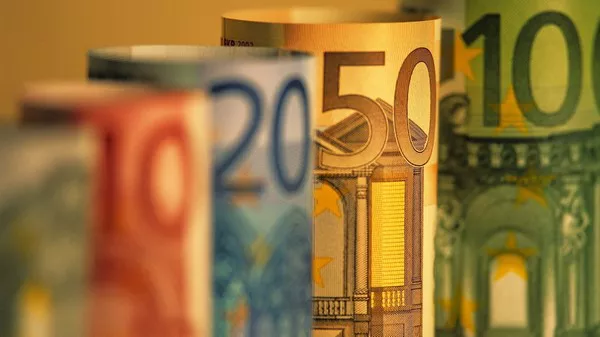The Euro, symbolized by € and with the ISO code EUR, is one of the world’s most widely recognized and traded currencies. It serves as the official currency for 19 of the 27 European Union (EU) member states, collectively known as the Eurozone. The adoption of the Euro has brought economic and financial benefits to these countries, but the path to a common currency was complex and required a high level of cooperation and coordination. In this article, we will delve into the countries that use the Euro, exploring the history of its adoption and the economic implications.
The Eurozone: A Collective Currency
The Eurozone, or Euro area, consists of 19 EU member states that have adopted the Euro as their official currency. These countries are as follows:
Austria
Belgium
Cyprus
Estonia
Finland
France
Germany
Greece
Ireland
Italy
Latvia
Lithuania
Luxembourg
Malta
Netherlands
Portugal
Slovakia
Slovenia
Spain
While these countries share the Euro as their official currency, they maintain individual sovereignty over their fiscal and economic policies. The coordination of these policies is overseen by various EU institutions, such as the European Central Bank (ECB) and the European Commission.
History of the Euro
The idea of a common European currency can be traced back to the 1960s, but the path to the Euro as we know it today began with the Maastricht Treaty of 1992. The treaty established the framework for European Economic and Monetary Union (EMU) and set the criteria for countries to qualify for Euro adoption. These criteria included low inflation, stable exchange rates, and sound fiscal policies.
On January 1, 1999, the Euro was introduced as an electronic currency for banking and financial transactions. Euro banknotes and coins came into circulation on January 1, 2002. Notably, the United Kingdom and Denmark had opt-out clauses in the treaty and chose to retain their national currencies (the British Pound and the Danish Krone, respectively).
Euro Adoption: A Complex Process
The decision to adopt the Euro is not taken lightly by EU member states. It requires meeting the convergence criteria established in the Maastricht Treaty, which encompass several economic and fiscal aspects, including:
Price Stability: The inflation rate must be within 1.5 percentage points of the three best-performing EU countries.
Sound Public Finances: The budget deficit must not exceed 3% of GDP, and public debt should not surpass 60% of GDP.
Exchange Rate Stability: Member states must have maintained exchange rate stability without devaluing their currency for at least two years.
Long-Term Interest Rates: The long-term interest rate should be within 2 percentage points of the three EU countries with the lowest inflation.
Countries that meet these criteria are eligible to adopt the Euro, but the decision ultimately lies with the member state’s government. After approval, a country enters the Eurozone and adopts the currency as its official legal tender.
Economic Implications of Euro Adoption
The adoption of the Euro carries several economic implications for member states:
Reduced Currency Risk: As member states no longer have their own national currencies, they are insulated from currency exchange rate fluctuations within the Eurozone. This reduces currency risk for businesses and individuals engaged in cross-border transactions.
Enhanced Trade: The Euro simplifies trade within the Eurozone by eliminating the need for currency conversion and associated costs. This has led to increased trade among Eurozone countries.
Price Transparency: The Euro’s adoption has made cross-border price comparisons easier for consumers, fostering competition and potentially reducing prices.
Monetary Policy: Member states give up control of their individual monetary policies when adopting the Euro. The European Central Bank sets interest rates and conducts monetary policy for the entire Eurozone. This centralization helps maintain price stability but may limit a country’s ability to respond to its unique economic conditions.
Influence on Inflation: The Eurozone-wide monetary policy can sometimes create challenges for individual member states. For example, the interest rate set by the ECB may not be optimal for all countries, potentially affecting their inflation rates and economic growth.
Economic Convergence: Euro adoption has led to increased economic convergence among member states as they work to meet the criteria for Eurozone membership. This convergence can lead to economic stability and mutual support in times of crisis.
Outside the Eurozone
While 19 EU member states have adopted the Euro, several EU countries have opted to maintain their national currencies. The United Kingdom is perhaps the most notable example, with the British Pound as its official currency. Other countries outside the Eurozone include Denmark, Sweden, and Croatia.
These countries have retained their currencies for various reasons, including concerns about losing control over monetary policy and national sovereignty. Additionally, some countries, like Sweden, have experienced reluctance among their populations to adopt the Euro.
Conclusion
The Euro stands as one of the world’s most significant currencies, serving as the official legal tender for 19 of the European Union’s member states. Its adoption has brought numerous economic benefits, including reduced currency risk, enhanced trade, and price transparency. However, the path to Euro adoption is complex and requires countries to meet strict economic and fiscal criteria.
While many EU countries have adopted the Euro, some, such as the United Kingdom and Denmark, have chosen to retain their national currencies. The decision to join the Eurozone is not just an economic one; it is also a reflection of national identity and sovereignty.
As the Eurozone continues to evolve and adapt to new economic challenges, its significance in the global financial landscape remains substantial. The Euro’s impact extends beyond its borders, influencing international trade and financial markets, making it a currency of global importance.


